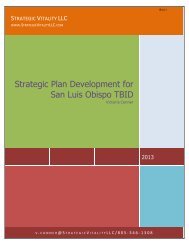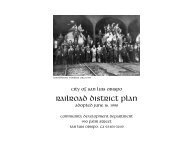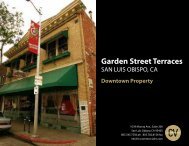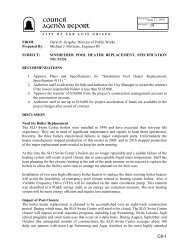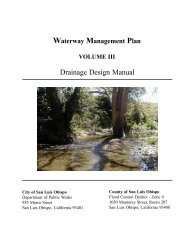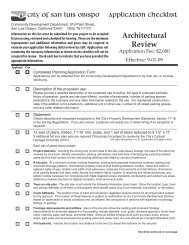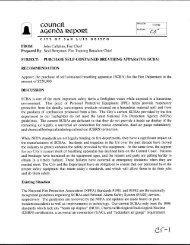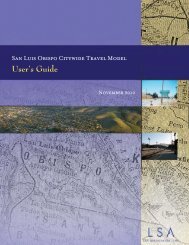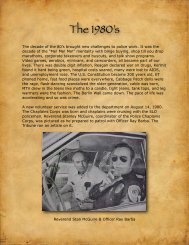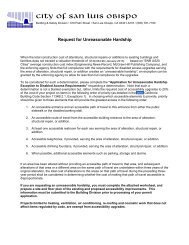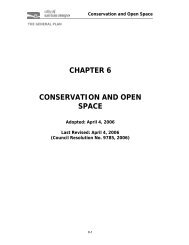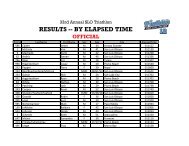South Broad Street Corridor Plan - the City of San Luis Obispo
South Broad Street Corridor Plan - the City of San Luis Obispo
South Broad Street Corridor Plan - the City of San Luis Obispo
You also want an ePaper? Increase the reach of your titles
YUMPU automatically turns print PDFs into web optimized ePapers that Google loves.
<strong>South</strong> <strong>Broad</strong> <strong>Street</strong> <strong>Corridor</strong> Area <strong>Plan</strong> – PC Hearing Draft February 2012<br />
4.3 STREET TREES AND LANDSCAPING<br />
The future growth area shall be landscaped with a palette <strong>of</strong> street trees and landscaping appropriate in<br />
scale and species for each <strong>of</strong> <strong>the</strong> differing street types in order to establish <strong>the</strong> hierarchy <strong>of</strong> streets and<br />
provide a cohesive <strong>the</strong>me for <strong>the</strong> area. <strong>Street</strong> trees should be planted on both sides <strong>of</strong> streets and generally<br />
be spaced no more than forty (40) feet apart.<br />
Figure 4.4 <strong>Street</strong> tree placement<br />
Species. Each street should have one dominant species <strong>of</strong> street tree for in-sidewalk planters or parkways,<br />
with alternate tree types for any in-street parking space trees (bulb-outs) and planted medians. Largecanopy,<br />
deep-root street trees should be used on all streets, as listed in <strong>the</strong> <strong>City</strong>’s Tree Regulations. Tree<br />
species should be selected to provide a consistent range in tree form, height, color, and texture, and to<br />
provide a canopy over sidewalk and street areas. Preferred street tree species for Entry, Village, and<br />
Service <strong>Street</strong>s are: London <strong>Plan</strong>e (Platanus acerifolia), Chinese Elm (Ulmus paviflolia), Jacaranda<br />
(Jacaranda mimosifolia), Chinese Pistache (Pistacia chinensis), and Red Maple (Acer rubrum).<br />
Alternative species from <strong>the</strong> approved <strong>City</strong> list may be approved by <strong>the</strong> Architectural Review<br />
Commission.<br />
Tree Grates. Sidewalks shall be <strong>City</strong> standard integral curb-gutter with a minimum width <strong>of</strong> ten (10) feet.<br />
Generously sized tree grates should be placed around street trees, <strong>of</strong>f-set in right-<strong>of</strong>-way, with <strong>the</strong> edge <strong>of</strong><br />
<strong>the</strong> grating spaced eighteen (18) inches from <strong>the</strong> back <strong>of</strong> <strong>the</strong> curb, as shown in Figure 4.5. Tree grates<br />
should occur along sidewalks and in public plazas where a continuous walking surface is needed. A<br />
standard tree grate size, shape and finish shall be used. Size shall be 48<br />
inches by 72 inches, with longest dimension parallel to <strong>the</strong> street. The<br />
design is shown in Figure 4.5, Neenah Foundry Model R-811, Model R-<br />
8815-1, or<br />
equal.<br />
Figure 4.5 <strong>Street</strong> Tree Grates: Narrow-slot<br />
rectangular tree grates with powder-coated<br />
finish (above) and rust finish (right)<br />
56



